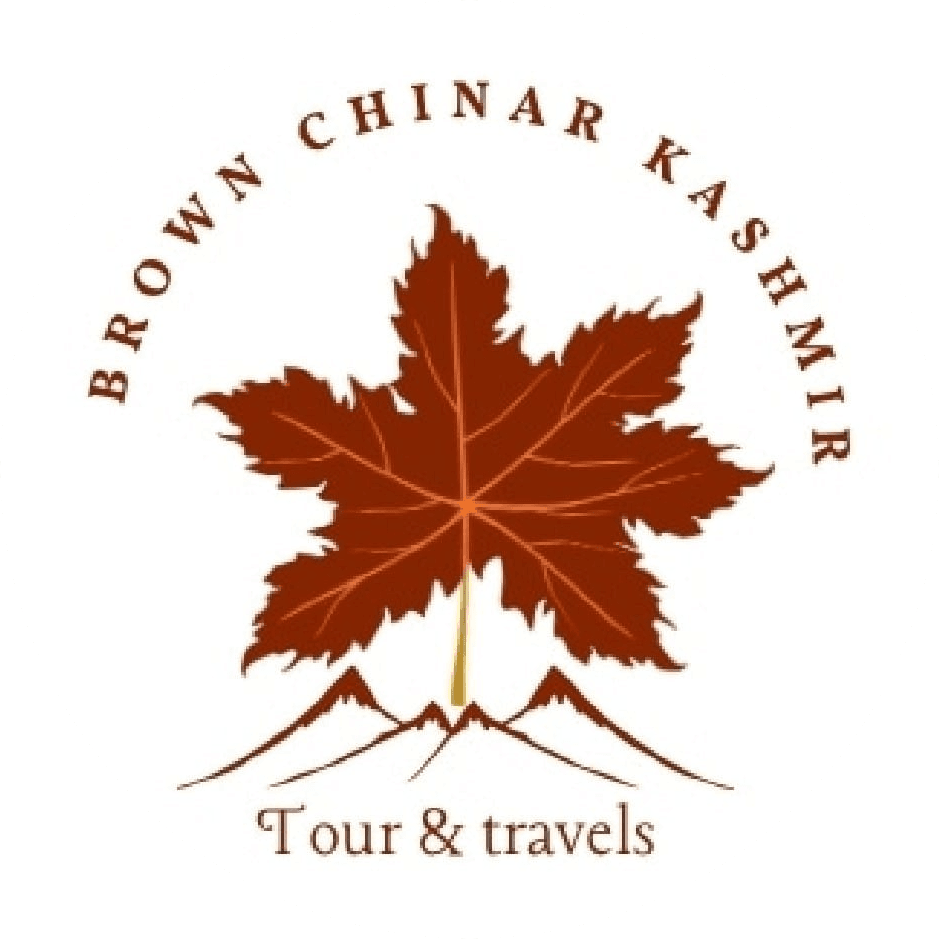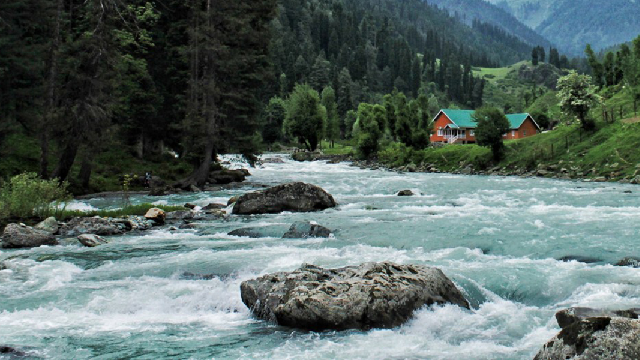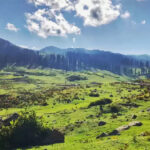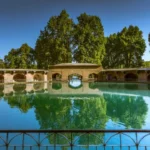Table of Contents
Toggle- Overview
- Daksum Valley: An Introduction
- Geography and Location: Exploring the Topography of Daksum Valley
- Access to Daksum Valley: Ease of Access and Approaches
- Best Time to Visit: Daksum Valley Activities during the season
- Places to visit in Daksum Valley: Must-visit places
- Adventure Activities in Daksum Valley
- Where to Stay in Daksum Valley: Accommodation Options
- Conclusion: Why Daksum Valley Should Be on Your Bucket List
- How to book Daksum Valley tour online?
- People Also Ask
- What is Daksum Valley?
- Where is Daksum Valley located?
- How can I reach Daksum Valley?
- What is the best time to visit Daksum Valley?
- What are the top attractions in Daksum Valley?
- Is Daksum Valley safe for tourists?
- What are the best activities to do in Daksum Valley?
- Can I go trekking in Daksum Valley?
- Are there camping sites in Daksum Valley?
- What is the weather like in Daksum Valley?
- Is there wildlife in Daksum Valley?
- What kind of flora can be found in Daksum Valley?
- What are the best trekking routes in Daksum Valley?
- Can I do fishing in Daksum Valley?
- Are there good accommodations in Daksum Valley?
- Is it possible to visit Daksum Valley in winter?
- How far is Daksum Valley from Pahalgam?
- What is the significance of Kokernag in Daksum Valley?
- What are the nearest towns to Daksum Valley?
- Can I go birdwatching in Daksum Valley?
- What is the distance between Srinagar and Daksum Valley?
- Are there any cultural experiences in Daksum Valley?
- Can I visit Daksum Valley during the monsoon season?
- Is there mobile network connectivity in Daksum Valley?
- What precautions should I take while traveling to Daksum Valley?
- Inquiry Form
Overview
Daksum Valley is one of the lesser-known yet highly fascinating destinations in the region, located in the beautiful Anantnag district of Jammu and Kashmir. This peaceful haven, with its unspoiled beauty, dense forests, pristine rivers, and awe-inspiring mountains, remains a hidden gem for those who seek refuge in nature. If you are an individual looking for an uncluttered retreat that is far removed from the crowded tourist places, then Daksum Valley is an extraordinary get-away into nature’s lap.
In this blog, we are going to take you along on a very long journey of Daksum Valley in relation to the geography, best time to visit, places of interest, activities, and other important travel tips. This will be the complete guide for you so that you might enjoy Daksum Valley to the fullest by simply exploring its beautiful meadows, trekking through it, and relishing its virgin beauty.
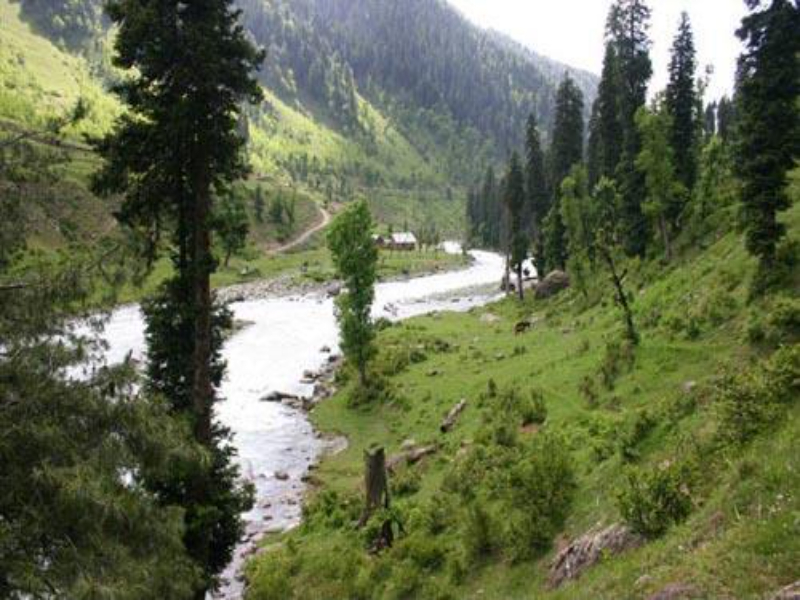
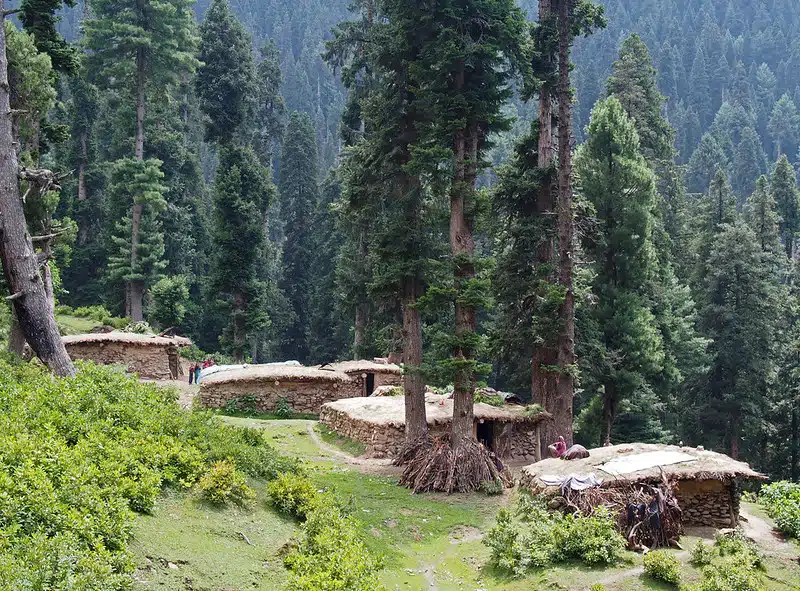
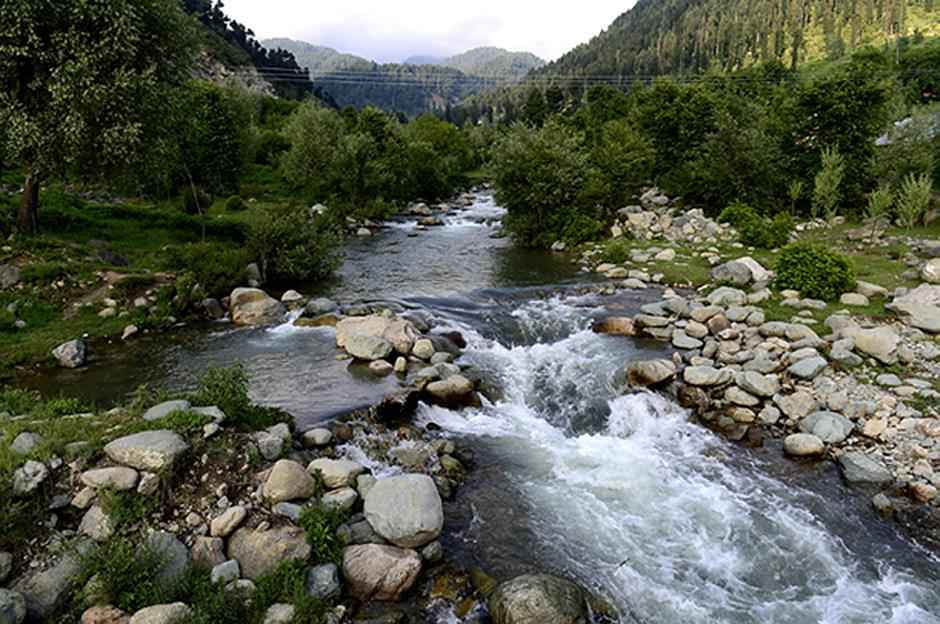
Daksum Valley: An Introduction
It is located in the state of Jammu and Kashmir within an area called Anantnag district. It lies in one of the pristine and lush terrains of Pir Panjal Range. Due to its proximity to Srinagar and Anantnag, it becomes easily accessible; however, mostly less crowded in contrast to some well-known hill stations of Gulmarg or Pahalgam. The combination of this place and its location, nature surrounding it has enough charm that it renders itself to become the perfect destination to relax, rediscover its relation with Mother Nature.
Situated about 2,400 meters above sea level, Daksum Valley has everything: the most serene retreats and high-energy treks. It holds dense forests of pine, deodar, and fir; vast meadows of grassy greenness; sparkling streams; and snow-clad peaks, making it one of the ideal places for photography, adventure activities, and nature lovers.
Geography and Location: Exploring the Topography of Daksum Valley
Daksum Valley is a high-altitude valley located at the southeastern corner of Jammu and Kashmir. It is covered by mountain ranges, alpine forests, and winding rivers. It is about 40 km from Anantnag and is accessible via road. Therefore, it is a great place for short vacations or weekend holidays.
Contrasting with the other part of the state, Daksum Valley has a uniqueness in its geography portrayed as the Pir Panjal mountain range, which forms the back of this region. The valley is located at the base of the impressive mountains which are great sights in the form of towering peaks mostly snow capped, especially in the winter season. Lying close to Kokernag, it has its region filled up with natural springs, and other water resources can be added. Streams, springs, and alpine lakes fill the valley with their heavenly beauty.
The valley is extensively covered with thick forests, mainly conifers like cedar, fir, and pine. These huge collections of forests are home to a fair amount of diversified wildlife, with these forests creating a natural habitat for a variety of birds and animals that are either natively belonging or indigenous to these territories.
Access to Daksum Valley: Ease of Access and Approaches
Though Daksum Valley is quite a distance away, it can be reached easily by road from some cities of Jammu and Kashmir. The valley has several ways to connect with other regions, so it is well connected by various modes of transport for this peaceful heaven .
By Air:
The nearest international airport is Sheikh ul-Alam International Airport, locally known as Srinagar Airport. It is about 95 km from Daksum Valley. Since it connects directly to cities like Delhi, Mumbai, and Bengaluru, it is considered the best place to land to reach this area.
From the airport, there are taxis or buses to Anantnag that takes one to the nearest town from Daksum. Daksum is about 40 kilometers from Anantnag and leads to the valley.
By Train:
The nearest railway station to Daksum Valley is Anantnag Railway Station, which is about 40 km from this valley. Train services are available from the town Anantnag. It connects this town to Jammu Railway Station and other Indian towns. One may hire a taxi or take a bus from Anantnag to reach Daksum Valley.
By Road:
Daksum Valley can be accessed through road from Srinagar, Anantnag, and other neighboring towns. The distance by road from Srinagar to Daksum Valley takes about 2 to 3 hours through the Srinagar-Anantnag road. The roads leading to the valley are a pleasure as they traverse some of the most beautiful landscapes and picturesque villages.
For those travelling from Pahalgam, the valley is approximately 35 km. During the journey to Pahalgam, panoramic views of forest and mountain scenes can be captured.
Best Time to Visit: Daksum Valley Activities during the season
You can visit Daksum Valley throughout the year, although different seasons of visitation will have different experiences when visiting the place. So, therefore depends on whether you want a vibrant green landscape of spring or cool and pleasing summers, or the autumn colors, or snowy winter landscape. Here, below is broken down the seasons by month:
Spring (March to May)
Spring is one of the magical times to visit Daksum Valley. Warm but not too warm, with temperatures ranging between 10°C and 20°C, it is perfect for trekking, camping, or nature walks. Colorful wildflowers all over the valley and trees in bloom give a very vibrant and greenish feel to this whole place. If you are a photographer, spring brings with it countless opportunities to capture the valley in all its glory.
Summer (June to August)
The peak tourist season of the valley of Daksum falls in summer. The climate during this season is cool and comfortable. The temperature during this season varies from 15°C to 25°C. It is ideal for a tour, a nature walk, or any other activity that can be enjoyed outdoors. The meadows are full of lush green grass and alpine flowers. This time also is inviting the crystal-clear streams and rivers. The most important drawback for visiting the area at this time is that this season coincides with peak traveler seasons. So, a visit will require making advanced reservations.
Fall (September to November)
Daksum Valley is as beautiful in the autumn when there is a tinge of the landscape warm and colors like the falling of the leaves: orange, red, and yellow, pleasant cool weather prevails while the sky has cleared, making the perfect time to take treks and photographs. The place has a peaceful, serene atmosphere, and since most summer tourists avoid visiting during autumn months, there would not be much tourist crowd in the valley.
Winter (December to February)
Daksum Valley is pure magic in the winter. The landscape gets covered with snow, and the valley looks like a winter wonderland. Temperatures are usually below freezing, and the region offers a surreal, serene atmosphere. For those who enjoy snowfall and winter sports, this is the best time to visit. However, it may make the roads slippery and some places may be inaccessible due to the accumulation of snow, so it’s better to plan in advance and check the weather before traveling.
Places to visit in Daksum Valley: Must-visit places
Daksum Valley is rich in attractions, which can simply knock any soul off its feet. Some of the main features within and outside the valley include:
- Daksum Village
Daksum Village, a beautiful peaceful place inside the valley bounded by tall woods and big mountains. This little quaint settlement remains very simple, however in narrow lanes that give one his first look into this age-old simple living pattern by locals. Thick forest all around with lush green grass and sparkling clear waters made the environment of Daksum perfectly fit to explore by those people who want some touch with mother nature.
- Kokernag Springs
This place is 25 kilometers from Daksum Valley and is known for its natural springs. Dubbed the ‘mini-Srinagar,’ this place is blessed with lush landscapes and a pleasant climate. The Kokernag Spring is one of the largest freshwater springs in Asia, and the gardens surrounding it are a perfect place for a picnic. It is also an excellent place for nature walks and birdwatching.
- Verinag
Verinag is a place about 30 kilometers from Daksum. Here is the source of the Jhelum River, known as the Verinag Spring. The spring is surrounded by beautiful gardens and offers a scenic view. It is a great place for travelers who love nature and history since it has been an important place for locals for centuries.
- Sinthan Top
Sinthan Top, at 3,750 meters, is a great place to trek from Daksum Valley. It is a very beautiful place offering sceneries of the surrounding valleys, peaks, and white cover of snow. The Sinthan Top is accessible through moderate-level trekking and would be a great challenge for any experienced trekker. In winters, the top stays covered with snow, and there comes an eye-catching winter scenery.
- Sheshnag Lake
Sheshnag Lake is the most picturesque and sacred lake located near Daksum. It can be approached through Amarnath Yatra route as well as through trekkers looking for a bit of an offbeat experience. The white mountains surrounding this make the water of this lake crystal clear, and the whole place serene, photogenic.
Adventure Activities in Daksum Valley
Daksum Valley is an excellent hub for all the outdoor and adventure activities that a traveler could ever want, and for those looking for something more than relaxation, there is much scope for getting active and enjoying nature. Some of the most popular activities are listed below:
- Trekking
Daksum Valley is known for its wonderful trekking treks and is an adventure lover’s paradise. One of the most popular treks is towards Sinthan Top, which is tough with wonderful Pir Panjal range views. A couple of treks can be done on softer routes also and provide a good trek to first-time trekkers. Dense forest, pristine meadows, and riverside treks are some of them in the valley.
- Camping
Camping in Daksum Valley is a unique experience of the unadulterated beauty of the region. Several campsites are available, where one can have an unforgettable night under the starry sky in the midst of the valley’s untouched wilderness. Camping in the valley brings one closer to nature as the sounds of rivers and the calls of wildlife provide the background for your stay.
- Fishing
Daksum Valley is an ideal location for anglers. The valley is home to a number of fish species. Trout abounds in the streams and rivers in the valley. Angling in the clear waters of the valley is a relatively simple and rewarding sport.
- Photography
Daksum Valley is an ideal location for photographers. Scenic landscapes with different ecosystems dot its area. There is a scope for clicking any of the scenes here – whether the misty mornings, vibrant meadows, or the majestic mountains. For those into birdwatching and wildlife photography, the opportunity to capture will not be low either. Many species like Himalayan Monal and Western Tragopan inhabit the valley.
Where to Stay in Daksum Valley: Accommodation Options
Although Daksum Valley is not vastly explored, it has accommodations of various sorts which suit most budgets and preferences.
- Homestays
Local Homestays are an excellent idea to experience the culture and hospitality of the region. Local homestays are simple yet a cozy place to experience homemade meals and interaction with locals.
- Guesthouses
There are also basic guesthouses, including in the Daksum village surroundings, where one can expect to find rooms with hot water, warm comforters, and an all-Kashmiri touch. They do come in at a more accessible price range to accommodate people with relatively less high-end expectations.
- Campsites
It’s the best option for those who love spending their time in nature. A few camps are set up all around Daksum Valley. The camps provide tent, sleeping bags, and food. It’s a great way to spend some time amidst the beauty of the region.
Conclusion: Why Daksum Valley Should Be on Your Bucket List
Daksum Valley must be one of the best hidden gems within Jammu and Kashmir. Serenity beauty, exciting adventurous activities, and breathtaking landscapes add much grandeur and magic to it. Indeed, it’s one of those places where, if you are there for natural, untouched beauty or going for a treacherous trek, it will still keep its peaceful nature open to everyone as long as one finds a piece of serenity in nature.
Compared to any other destination known in the region, tourists visit the valley less. This makes it more quiet and more authentic. Daksum Valley, therefore, is a destination one should have in their traveling list if they want a destination that combines tranquility with adventure.
How to book Daksum Valley tour online?
Contact Brown Chinar at +91 6005039532/+91 9906188874 or Email us at : Enquiry@brownchinarkashmir.com
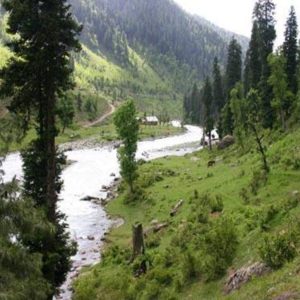

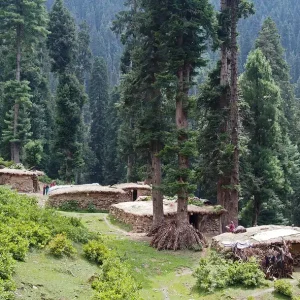
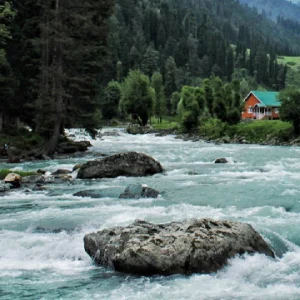
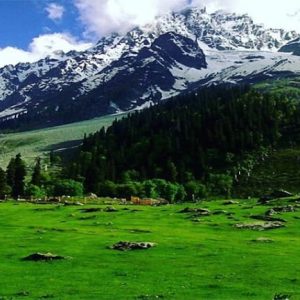
People Also Ask
What is Daksum Valley?
Daksum Valley is a picturesque and tranquil valley located in the Anantnag district of Jammu and Kashmir, India. It is known for its lush green meadows, dense forests, alpine lakes, and snow-capped mountains, making it a hidden gem for nature lovers and adventure enthusiasts.
Where is Daksum Valley located?
Daksum Valley is situated in the southeastern part of Jammu and Kashmir, about 40 kilometers from Anantnag, and 95 kilometers from Srinagar. It lies at an altitude of 2,400 meters above sea level, nestled in the Pir Panjal mountain range.
How can I reach Daksum Valley?
To reach Daksum Valley, you can fly into Sheikh ul-Alam International Airport (Srinagar), then take a taxi or bus to Anantnag. From Anantnag, Daksum is a 40-kilometer drive by road. Alternatively, you can take a train to Anantnag Railway Station and then travel by taxi or bus.
What is the best time to visit Daksum Valley?
The best time to visit Daksum Valley is during the summer months (April to June) when the weather is pleasant. For those seeking winter beauty, December to February offers a snow-covered landscape. Autumn (September to November) is ideal for photography, with the valley transforming into vibrant hues.
What are the top attractions in Daksum Valley?
Top attractions include Daksum Village, Kokernag Springs, Verinag Spring, Sinthan Top, and the stunning Sheshnag Lake. The valley is also home to lush meadows, alpine forests, and several trekking routes that offer panoramic views of the surrounding mountains.
Is Daksum Valley safe for tourists?
Yes, Daksum Valley is generally safe for tourists, especially during the peak tourist seasons. However, it’s always recommended to check current travel advisories, avoid traveling during political unrest, and take necessary precautions when trekking or exploring remote areas.
What are the best activities to do in Daksum Valley?
Popular activities in Daksum Valley include trekking, camping, fishing, nature walks, birdwatching, and photography. For adventure enthusiasts, the trek to Sinthan Top and camping in the valley are some of the best activities to explore.
Can I go trekking in Daksum Valley?
Yes, Daksum Valley offers several trekking routes, including the popular Sinthan Top trek, which provides stunning views of the Pir Panjal range. The valley also has beginner-friendly routes that allow visitors to explore its dense forests and alpine meadows.
Are there camping sites in Daksum Valley?
Yes, there are several camping sites in Daksum Valley. These campsites allow tourists to spend the night amidst the serene environment of the valley, providing a perfect opportunity for stargazing and experiencing the beauty of the outdoors.
What is the weather like in Daksum Valley?
Daksum Valley enjoys a temperate climate. Summers are cool with temperatures ranging from 15°C to 25°C, while winters can be very cold, with temperatures dropping below freezing and snowfall being common. Spring and autumn are the best seasons to visit for pleasant weather and beautiful landscapes.
Is there wildlife in Daksum Valley?
Yes, Daksum Valley is home to diverse wildlife, including species like the Himalayan brown bear, musk deer, snow leopard, and various species of birds such as the Himalayan Monal and Western Tragopan. It is a great destination for wildlife photography.
What kind of flora can be found in Daksum Valley?
Daksum Valley boasts lush forests primarily made up of deodar, fir, pine, and oak trees. The meadows are home to wildflowers like daisies, tulips, and lilies, making it a botanical paradise, especially in spring and summer.
What are the best trekking routes in Daksum Valley?
Some of the best trekking routes in Daksum Valley include the trek to Sinthan Top, which offers panoramic views of the surrounding valleys and peaks, and the trail leading to Sheshnag Lake, which is ideal for those looking for an offbeat adventure.
Can I do fishing in Daksum Valley?
Yes, Daksum Valley offers excellent fishing opportunities, particularly in its clear, freshwater streams. Visitors can fish for trout and other freshwater species, making it a perfect spot for fishing enthusiasts.
Are there good accommodations in Daksum Valley?
Accommodation options in Daksum Valley include guesthouses, homestays, and campsites. Visitors can stay in comfortable homestays to experience local hospitality or opt for campsites for a more immersive experience in nature.
Is it possible to visit Daksum Valley in winter?
Yes, Daksum Valley is open during winter, although it can be quite cold with heavy snowfall. It transforms into a winter wonderland, making it perfect for snow lovers, though some areas may be inaccessible due to snow.
How far is Daksum Valley from Pahalgam?
Daksum Valley is approximately 35 kilometers from Pahalgam, a popular tourist destination. It takes around 1.5 to 2 hours by road to reach Daksum Valley from Pahalgam.
What is the significance of Kokernag in Daksum Valley?
Kokernag is known for its natural freshwater springs, and it is often referred to as “mini-Srinagar.” It’s a popular stop for visitors who enjoy the peaceful environment and scenic views. The Kokernag Spring is one of the largest freshwater springs in Asia.
What are the nearest towns to Daksum Valley?
The nearest towns to Daksum Valley include Anantnag (around 40 kilometers away), Srinagar (around 95 kilometers), and Pahalgam (about 35 kilometers). These towns are well connected to the valley by road.
Can I go birdwatching in Daksum Valley?
Yes, Daksum Valley is a great destination for birdwatching. The valley is home to several bird species, including the Himalayan Monal, Western Tragopan, and various species of pheasants, making it an excellent location for birding enthusiasts.
What is the distance between Srinagar and Daksum Valley?
The distance between Srinagar and Daksum Valley is approximately 95 kilometers by road. It takes around 2 to 3 hours to travel by car or taxi, depending on road conditions.
Are there any cultural experiences in Daksum Valley?
Yes, Daksum Valley offers an opportunity to experience the traditional Kashmiri lifestyle. Visitors can interact with the locals, learn about their customs, and enjoy authentic Kashmiri food by staying in homestays.
Can I visit Daksum Valley during the monsoon season?
While the monsoon season (July to September) brings lush greenery and misty landscapes to Daksum Valley, it also brings heavy rainfall, which can make roads slippery and difficult to navigate. If you’re okay with the rain, the valley’s natural beauty during this season can be quite enchanting.
Is there mobile network connectivity in Daksum Valley?
Mobile network connectivity in Daksum Valley may be limited, particularly in remote areas. However, major networks like Jio and BSNL work in some parts of the valley, especially around the town areas.
What precautions should I take while traveling to Daksum Valley?
While traveling to Daksum Valley, make sure to carry warm clothing (even in summer), pack essential medications, and stay hydrated. It’s recommended to hire a local guide for trekking and remote explorations to ensure safety. Always check the weather conditions before traveling during winter or monsoon.
